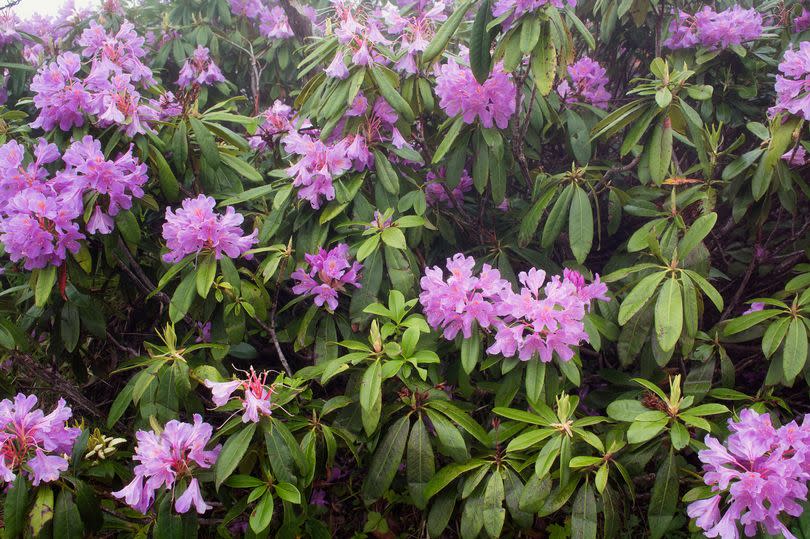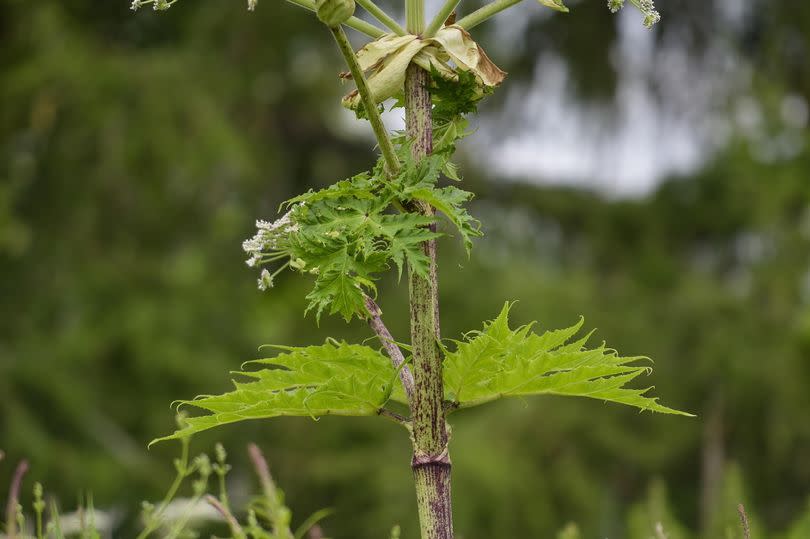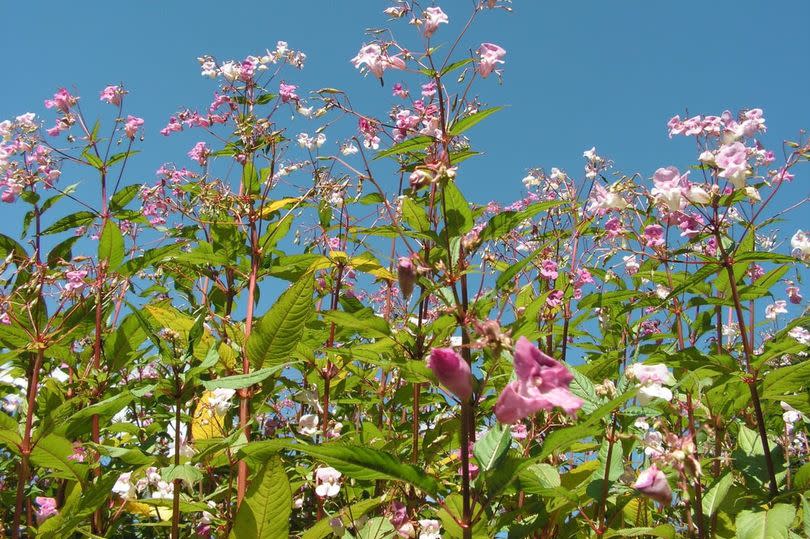Plants that are 'illegal' if they spread outside garden - the five 'worst offenders'

With summer fast approaching, keen gardeners will be pruning hedges, planting flowers and pulling up weeds in the garden in preparation for the growing season.
But green-fingered fanatics may be surprised to learn that certain plants can actually be illegal if they grow outside your property. Under UK laws, you could be prosecuted for allowing so-called invasive plants to run riot outside your garden.
These invasive species are non-native plants with a propensity to spread uncontrollably and pop up where they're not wanted. It's against the law to intentionally let these plants take root in the wild or to neglect them in your garden to the point where they become a public nuisance.
According to the UK Government, if you find invasive non-native plants on your land, you must stop them from spreading and causing a nuisance or damage to other land or property. "If you do not, you could be responsible for any damage they cause and may be prosecuted," the law states.
It's important to note that these problematic plants aren't limited to weeds; many are available for purchase at local garden centres. To assist green-fingered enthusiasts, experts have identified several plants to steer clear of.
Specialists from Cel Solicitors have issued a warning that it is "a criminal offence" to plant or encourage the growth of certain non-native invasive species. Offenders could face hefty penalties, including a "£5,000 fine and/or two years imprisonment".
They highlighted: "We rounded up some of the worst offenders, most of which are so damaging to the environment they're actually illegal to grow in the UK."
Japanese knotweed
Japanese knotweed was once considered a beautiful addition to UK gardens due to its attractive white flowers that burst into bloom during the warmer months. But the plant turned out to be "incredibly invasive".
Even though the frightful flora can't spread its seeds, it makes up for it with a "strong and fast-growing" root system.
The task of getting rid of this notorious weed is quite a logistical challenge as a fresh plant can freely spring from just a piece of root. The legal experts laid it out clear: "The best route for removal is a chemical spray or, depending on your property value, an excavation."
"Of course, this treatment is very expensive which is why many opt to get treatment done as part of a legal claim."
Giant hogweed

Giant hogweed bears resemblance to an overgrown version of cow parsley, standing tall up to 10 feet. This plant expands its reach through its seeds, they are carried by birds and other fauna or dispersed along waterways.
While the control of Giant hogweed isn't anywhere as tough as containing Japanese knotweed, effort still needs to be put in to halt its spread.
The expert said: "Similar to Japanese knotweed, it is illegal to allow this weed to grow onto neighbouring properties, meaning that you can make a legal claim if it has spread to your land."
Himalayan balsam

Another nuisance botanical invader is the Himalayan balsam, an extensive weed issue that plagues our gardens. According to the experts: "It grows rapidly and spreads quickly, smothering other vegetation as it goes."
This plant showcases "pretty pink flowers", hence it is often unknowingly expanded by people sharing its seeds with friends to beautify their gardens.
Rhododendron ponticum

Rhododendron ponticum is a formidable adversary in the plant world, capable of producing over a million minuscule seeds annually that are easily dispersed by the wind. Experts warn that this species is "incredibly difficult to remove" once established, whether through excavation or the application of herbicides.
Some varieties of rhododendron have been known to endure for hundreds of years, and it's illegal to plant or permit their growth in the UK due to their classification as an "invasive" species. Their rapid expansion can wreak havoc on other flora.
The dense foliage of Rhododendron ponticum creates a canopy so thick that it blocks sunlight from reaching plants below, effectively smothering most other wild plants and trees. Only those plants that can tower above its expansive bushes manage to survive.
Three-cornered garlic
Another invasive species causing concern is the three-cornered garlic, with its pendent white blossoms that produce large seeds appealing to ants. These insects unwittingly aid in the widespread distribution of the plant, enabling it to flourish in the wild.
This plant establishes dense colonies that overshadow early spring flowers such as primroses and violets. Legal experts point out that along some roadside verges and banks, it forms extensive stands that can spread for several meters.
Predominantly found in southern and western Britain, the three-cornered garlic is proliferating and advancing northward.
Don't miss the latest news from around Scotland and beyond - Sign up to our newsletter here.

 Yahoo News
Yahoo News 
